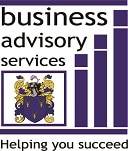If you are relatively new to the business arena, you’re probably not too good at reading financial statements. But for someone who is planning to start a small business, it is crucial to learn how to read financial statements and understand what they mean.
Today, we are going to discuss one type of financial statement called the profit and loss statement. A profit and loss statement is a summary of your income and expenses over a certain period of time, usually a quarter or a year. The profit and loss statement is important because it helps you to understand the profitability or financial condition of your company over that certain period of time.
The main components of a profit and loss statement are:
Sales – Constitute the total revenue received from the sale of a good.
Cost of goods sold – These are the costs directly linked to the production of the good.
Gross Profit (Loss) – Results when the cost of goods sold is subtracted from sales revenue. The gross profit represents the profitability that is generated by the sales revenue.
Operating expenses – These are the general and administrative expenses that are incurred in the day-to-day running of your business; some examples are employee salaries, advertising costs, and rent.
Operating Profit – Results when all the operating expenses are subtracted from the gross profit. The operating profit represents the profitability that is generated when the daily operating activities of the business are taken into account.
Other income and expenses – These are earnings or expenses that a business would not normally have in its day-to-day operations. A good example could be rent earned from a property or interest that is paid on long-term debt. The expenses are subtracted from the earnings in this component to arrive at a net figure.
Net profit before taxes – Results when the net figure for other income and expenses is either added or subtracted from the operating profit. Net profit shows how profitable the company is after all the different types of expenses have been deducted, that is, before it pays it’s taxes.
Income taxes – This is the amount of taxes the company is obliged to pay.
Net income (loss) – Results when the income taxes have been subtracted from net profit. If the net income is positive, the company has been profitable over the accounting period. This figure represents the overall profitability of the company when every single cost of the business has been accounted for.
The net income is essentially the bottom line and constitutes the amount of money that the company has left at the end of the period.
As a business owner, you should be able to understand how profitable your company is. From the profit and loss statement, you can easily identify which types of costs took the most away from your bottom line and start thinking of ways that you can curb them.
The profitability of your company will also be of interest to banks and lenders. A profitable company shows that it is adept at making the most out of borrowed funds and will have less of a problem securing funds in the future. Now that you see how useful it can be to develop your understanding of this type of financial statement, it would definitely be a good idea to do some additional reading up on the subject.
To get a bigger picture of how some of the components of a profit and loss statement can be used in a budget, have a look at my article called “How to Prepare a Budget”.
